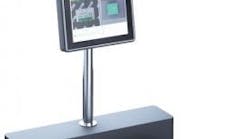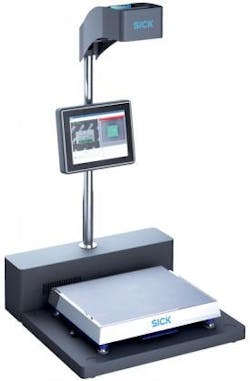SICK announced the latest iteration in the Master Data Analyzer family of products—the Master Data Analyzer Vision (MDA Vision), which promises to help retailers find a more effective way to optimize space in a warehouse or distribution center by providing accurate product data.
Collecting master data and dimensioning data can help retailers analyze all goods entering or leaving a facility. Once collected, all that data can be sent to a warehouse management system, making it easier to optimize space. The MDA Vision provides master-data recording in one step in less than a second. The product is also NTEP certified to provide legal for trade (LFT) dimensions and weight for measured packages.
“As the pandemic has continued to accelerate e-commerce and same-day delivery demands, the evolution of logistics technologies and processes have also accelerated to keep pace,” said Don DeLash, national retail sales manager at SICK USA. “An emerging trend is the implementation of data capture and information technologies that support dynamic, real-time package routing and course adjustments.
SICK offers the MDA Vision that analyzes and obtains the master data (or dimensioning data) for all goods entering or leaving a facility and sends it to a warehouse-management system. The digitalization of master data-management provides visual, qualitative, quantitative, and location information for each package within the warehouse. This enables retailers to not only optimize space, but also better manage deliveries.
The MDA Vision enables high-precision dimensioning with 3D machine vision, detecting objects as small as 40x40x10mm and as large as 600x500x400mm or 800x500x200mm, per its maker. It also reliably weighs from 20g to 60kg, with a resolution of up to ±2 g.
This product has powerful code reading due to a matrix camera, including 1D and 2D codes and the reading of multiple codes within one measurement process. As an output, the MDA Vision provides a high-resolution color image, with up to six megapixels, notes SICK.
“By integrating unique package identifiers—whether it be in the form of package or label data, 1D/2D barcodes, or RFID—shippers can make in-transit decisions about package delivery destinations,” DeLash added. “For example, if a retailer ships a parcel from Pittsburgh to an online customer in Seattle, but while in transit, that item becomes available from a facility (store or warehouse) locally, the retailer can re-route that package to a customer who ordered the same package in Columbus, or to a store in Detroit that is low on inventory of that item. When this type of dynamic transportation management is implemented across a network, the substantial improvement in customer experience becomes evident.”




